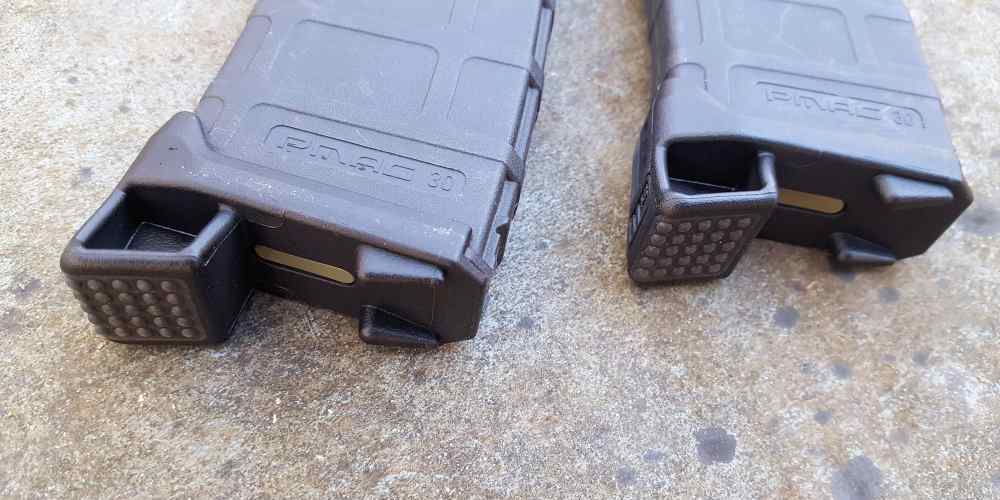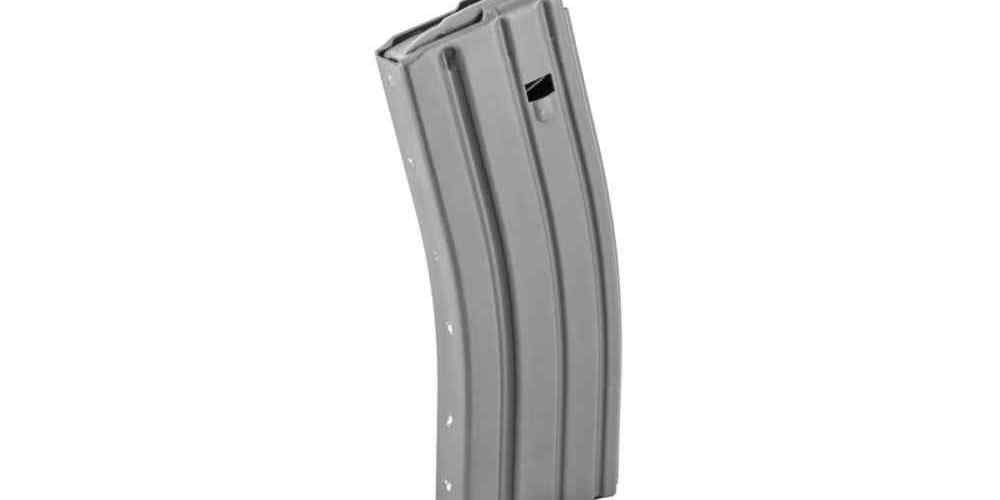“Explore the inner workings of the AR15 magazine with detailed anatomy illustrations.”
History of AR15 Magazines
The AR15 rifle is a popular firearm known for its versatility and customization options. One key component of the AR15 is the magazine, which holds and feeds ammunition into the rifle. Understanding the anatomy of an AR15 magazine is essential for gun enthusiasts and owners alike.
The history of AR15 magazines dates back to the 1950s when the rifle was first developed by Eugene Stoner. The original AR15 magazines were made of aluminum and had a capacity of 20 rounds. Over the years, advancements in technology and materials have led to the development of various types of AR15 magazines with different capacities and features.
Today, AR15 magazines are typically made of aluminum, polymer, or steel. Aluminum magazines are lightweight and durable, making them a popular choice among gun owners. Polymer magazines are also lightweight and resistant to corrosion, making them ideal for use in harsh environments. Steel magazines are known for their durability and longevity, but they can be heavier than aluminum or polymer magazines.
AR15 magazines come in various capacities, ranging from 10 rounds to 30 rounds or more. The capacity of a magazine is determined by the number of rounds it can hold. Higher capacity magazines are popular among shooters who need to fire multiple rounds quickly, such as in competitive shooting or self-defense situations.
The design of an AR15 magazine is crucial for reliable feeding and function. The magazine body is the main component of the magazine and houses the ammunition. The feed lips at the top of the magazine guide the rounds into the chamber of the rifle. The follower is a spring-loaded component that pushes the rounds up as they are fired. The base plate at the bottom of the magazine secures the components in place.
One key feature of AR15 magazines is the type of feed system they use. There are two main types of feed systems: staggered and straight. Staggered feed magazines have alternating rounds that are staggered in a zig-zag pattern, while straight feed magazines have rounds that are aligned in a straight line. Staggered feed magazines are more common and are known for their reliability and smooth feeding.
Another important aspect of AR15 magazines is the type of ammunition they can accept. Most AR15 magazines are designed to accept .223 or 5.56mm ammunition, which are the standard calibers for the rifle. However, there are also magazines available for other calibers, such as 9mm or .300 Blackout, which can be used with AR15 rifles that have been modified to accept different calibers.
In conclusion, the anatomy of an AR15 magazine is a complex and important aspect of the rifle. Understanding the history, materials, design, and features of AR15 magazines is essential for gun owners and enthusiasts. Whether you are looking for a lightweight aluminum magazine for target shooting or a durable steel magazine for tactical use, there are plenty of options available to suit your needs. The next time you load up your AR15 rifle, take a moment to appreciate the craftsmanship and engineering that goes into the magazine that feeds your ammunition.

Types of AR15 Magazines
When it comes to AR15 magazines, there are a variety of options available on the market. Understanding the anatomy of an AR15 magazine can help you make an informed decision when choosing the right one for your needs. In this article, we will take a closer look at the different types of AR15 magazines and how they function.
One of the most common types of AR15 magazines is the standard aluminum magazine. These magazines are lightweight, durable, and reliable. They typically have a capacity of 30 rounds, although there are also options available with higher or lower capacities. The aluminum construction of these magazines makes them resistant to corrosion and wear, ensuring that they will last for years to come.
Another popular type of AR15 magazine is the polymer magazine. These magazines are made from a lightweight and durable polymer material, making them a great choice for those looking for a more affordable option. Polymer magazines are also resistant to corrosion and wear, and many shooters find them to be just as reliable as aluminum magazines. They are available in a variety of colors and capacities, making them a versatile choice for any shooter.
Steel magazines are another option for AR15 owners. These magazines are heavier than aluminum or polymer magazines, but they are extremely durable and long-lasting. Steel magazines are less prone to denting or bending, making them a great choice for those who put their magazines through heavy use. While steel magazines may be heavier than other options, many shooters appreciate the added durability and reliability that they provide.
In addition to the material used in the construction of AR15 magazines, there are also different types of magazine designs to consider. One common design is the straight magazine, which features a straight body that holds the cartridges in a single stack. Straight magazines are typically more compact than other designs, making them a popular choice for shooters who value a sleek and low-profile magazine.
Another common design is the curved magazine, which features a curved body that allows for a higher capacity of cartridges. Curved magazines are typically larger and bulkier than straight magazines, but they offer the advantage of being able to hold more rounds. This can be especially useful for shooters who need to fire a high volume of rounds without needing to reload frequently.
In conclusion, there are a variety of AR15 magazines available on the market, each with its own unique features and benefits. Whether you prefer the lightweight and durable construction of aluminum magazines, the affordability of polymer magazines, or the durability of steel magazines, there is a magazine out there to suit your needs. Consider the material, capacity, and design of the magazine when making your decision, and choose the one that best fits your shooting style and preferences.
Components of an AR15 Magazine
When it comes to firearms, the AR15 is one of the most popular and versatile rifles on the market. One of the key components of an AR15 is the magazine, which holds and feeds ammunition into the rifle. In this article, we will take a closer look at the anatomy of an AR15 magazine and explore its various components.
The body of an AR15 magazine is typically made of metal or polymer and is designed to hold a specific number of rounds. The most common capacity for AR15 magazines is 30 rounds, but there are also options available with higher or lower capacities. The body of the magazine is designed to be durable and lightweight, making it easy to carry and use in a variety of shooting situations.
At the top of the magazine is the feed lips, which help guide the ammunition into the rifle’s chamber. The feed lips are designed to be smooth and rounded to prevent any damage to the ammunition as it is being loaded into the rifle. The feed lips are an important component of the magazine, as they ensure that the ammunition feeds smoothly and reliably into the rifle.
Inside the magazine body is the spring, which is responsible for pushing the ammunition up into the feed lips. The spring is typically made of steel and is designed to be strong and durable. The tension of the spring is important, as it needs to be strong enough to push the ammunition up into the feed lips, but not so strong that it causes feeding issues. The spring is a critical component of the magazine, as it ensures that the ammunition is fed into the rifle consistently and reliably.
At the bottom of the magazine is the floor plate, which is used to hold the spring in place and provide a base for the magazine. The floor plate is typically removable, allowing for easy disassembly and cleaning of the magazine. Some floor plates also have a locking mechanism to prevent accidental disassembly of the magazine during use. The floor plate is an important component of the magazine, as it provides stability and support for the spring and ammunition.
In addition to the body, feed lips, spring, and floor plate, some AR15 magazines also have a follower. The follower is a small piece of plastic or metal that sits on top of the spring and helps guide the ammunition up into the feed lips. The follower is designed to be smooth and rounded, preventing any damage to the ammunition as it is being loaded into the rifle. The follower is an important component of the magazine, as it ensures that the ammunition feeds smoothly and reliably into the rifle.
Overall, the AR15 magazine is a critical component of the rifle, as it holds and feeds the ammunition into the rifle’s chamber. The magazine is made up of several key components, including the body, feed lips, spring, floor plate, and follower. Each of these components plays a crucial role in ensuring that the ammunition feeds smoothly and reliably into the rifle. By understanding the anatomy of an AR15 magazine, shooters can better appreciate the design and function of this essential firearm component.
Maintenance and Cleaning Tips for AR15 Magazines
When it comes to maintaining and cleaning your AR15 magazines, it’s important to understand the anatomy of these essential components. By knowing how they work and what parts need attention, you can ensure that your magazines function properly and reliably. In this article, we will take a closer look at the various parts of an AR15 magazine and provide some tips on how to keep them in top condition.
The body of an AR15 magazine is typically made of aluminum or polymer, with a spring and follower inside. The body is where the cartridges are stored, and it is important to keep it clean and free of debris. To clean the body of the magazine, simply wipe it down with a clean cloth or use a mild solvent to remove any built-up dirt or grime. Be sure to inspect the body for any signs of damage, such as dents or cracks, as these can affect the magazine’s performance.
The spring inside the magazine is what pushes the cartridges up into the chamber of the rifle. Over time, the spring can become worn or compressed, leading to feeding issues. To prevent this, it is important to regularly inspect the spring for any signs of wear or damage. If the spring appears to be worn out, it may need to be replaced. To clean the spring, simply wipe it down with a clean cloth and apply a light coat of lubricant to keep it functioning smoothly.
The follower is the part of the magazine that pushes the cartridges up as the spring compresses. Like the spring, the follower can become worn or damaged over time, leading to feeding issues. To clean the follower, simply wipe it down with a clean cloth and inspect it for any signs of wear. If the follower appears to be damaged, it may need to be replaced. Keeping the follower clean and free of debris will help ensure smooth feeding of cartridges into the chamber.
The feed lips of the magazine are the two metal lips at the top of the magazine that guide the cartridges into the chamber of the rifle. It is important to keep the feed lips clean and free of debris to prevent feeding issues. To clean the feed lips, simply wipe them down with a clean cloth and inspect them for any signs of wear. If the feed lips appear to be damaged or bent, they may need to be replaced. Keeping the feed lips in good condition will help ensure reliable feeding of cartridges into the chamber.
In conclusion, maintaining and cleaning your AR15 magazines is essential for ensuring reliable performance. By understanding the anatomy of these components and knowing how to properly care for them, you can keep your magazines functioning smoothly and reliably. Regularly inspecting and cleaning the body, spring, follower, and feed lips of your magazines will help prevent feeding issues and ensure that your rifle operates at its best. By following these tips, you can keep your AR15 magazines in top condition for years to come.
Upgrades and Accessories for AR15 Magazines
When it comes to upgrading and accessorizing your AR15, one of the most important components to consider is the magazine. The magazine is where your ammunition is stored and fed into the rifle, making it a crucial part of your shooting experience. In this article, we will take a closer look at the anatomy of an AR15 magazine to help you better understand how it works and how you can improve its performance.
At its core, an AR15 magazine is a simple device designed to hold and feed ammunition into the rifle. The most common type of AR15 magazine is the detachable box magazine, which is typically made of metal or polymer. The magazine consists of a body, a follower, a spring, and a floor plate. The body is where the ammunition is stored, while the follower is a piece that moves up and down inside the body to push the rounds towards the feeding lips. The spring provides tension to push the follower and ammunition upwards, while the floor plate keeps everything in place.
One of the key factors to consider when upgrading your AR15 magazine is the material it is made of. Metal magazines are typically more durable and long-lasting than polymer magazines, but they can be heavier and more expensive. Polymer magazines, on the other hand, are lightweight and affordable, but may not be as durable as their metal counterparts. Ultimately, the choice between metal and polymer magazines comes down to personal preference and intended use.
Another important consideration when upgrading your AR15 magazine is the capacity. Standard AR15 magazines typically hold 30 rounds of ammunition, but there are also options available with higher capacities, such as 40 or even 60 rounds. Higher capacity magazines can be useful in certain situations, such as competition shooting or self-defense, but they can also be heavier and more cumbersome to carry. It is important to weigh the pros and cons of higher capacity magazines before making a decision.
In addition to material and capacity, there are also a variety of accessories available to enhance the performance of your AR15 magazine. One popular accessory is the magazine extension, which adds extra rounds to the magazine without increasing its overall length. This can be useful for shooters who need more ammunition without sacrificing maneuverability. Another common accessory is the magazine coupler, which allows you to quickly and easily switch between multiple magazines for faster reloads.
When it comes to maintaining your AR15 magazine, regular cleaning and lubrication are key. Dirt and debris can build up inside the magazine and cause feeding issues, so it is important to clean it regularly with a brush and solvent. Lubricating the spring and follower can also help ensure smooth and reliable feeding. Additionally, it is a good idea to inspect your magazine for any signs of wear or damage, such as cracked feed lips or a weak spring, and replace it if necessary.
In conclusion, the AR15 magazine is a critical component of your rifle that can greatly impact your shooting experience. By understanding the anatomy of the magazine and considering factors such as material, capacity, and accessories, you can make informed decisions about how to upgrade and improve its performance. With proper maintenance and care, your AR15 magazine can provide reliable and consistent feeding for years to come.






